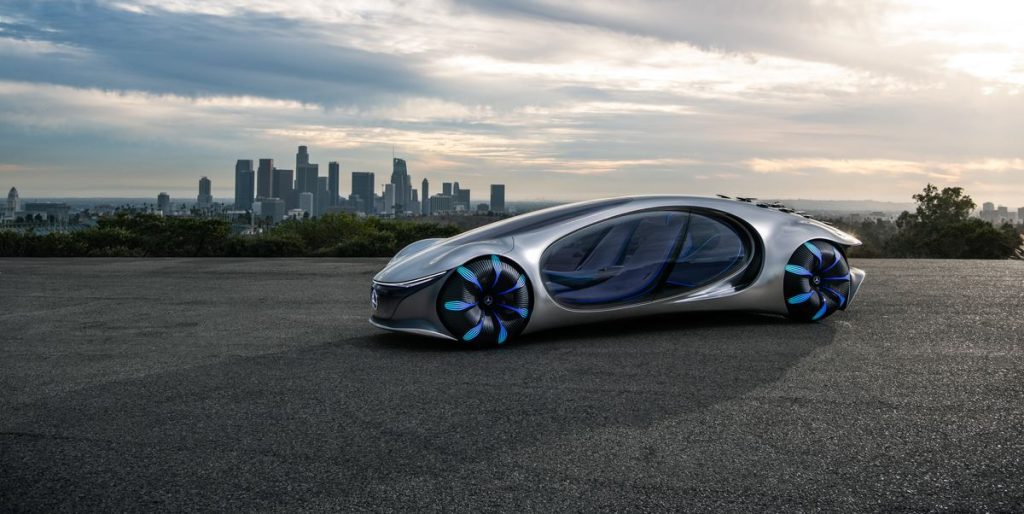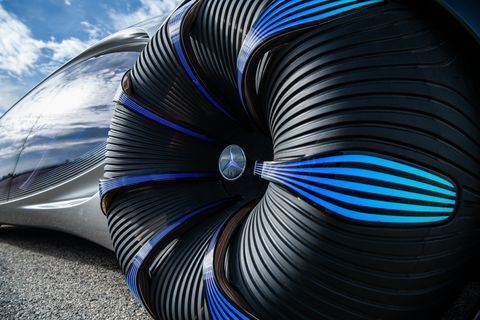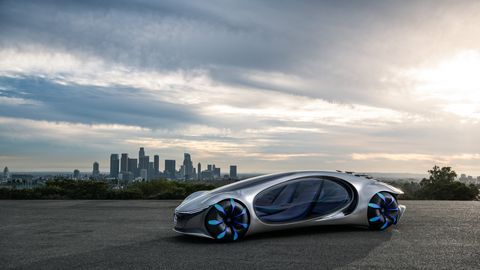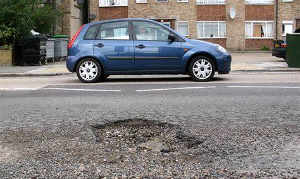It's Alive! We Ride in the Mercedes-Benz Vision AVTR Concept

The Mercedes-Benz Vision AVTR was first unveiled at CES in 2020, and now it moves under its own power.The concept is claimed to have been inspired by the original Avatar blockbuster film, which was set in a naturalistic other-world paradise with no cars.Now, there’s a sequel, Avatar: The Way of Water. The Vision AVTR is not in the movie.
In November, Mercedes and the producers of Avatar: The Way of Water invited a few journalists to the studio in El Segundo, California, where the creative force behind Avatar, James Cameron, has set up his shop. There, amid impressive props from Cameron’s previous films—including the Terminator movies, Aliens, and Titanic—we saw a few clips from the new film and took a ride in the Vision AVTR concept.
First, let us say that James Cameron is about as safe a bet as there is in the movie business, and the clips shown look pretty good. The relationship of Mercedes-Benz to a film that takes place in a fictional world of blue giants that spend much of their time swimming seems more than a little tenuous, however.
More Pie-in-the-Sky Mercedes Concepts
“You respond to your environment,” explained one of the movie’s producers, Jon Landau, in a teleconference. “If you walk through the world of Avatar, things change. You’re connected and respond to your environment. The bioluminescence, when you touch it then things react. And the car does that same thing in its environment.” See? There is a connection.
The Vision AVTR sure does looks futuristic. It’s a future where, apparently, side-impact door beams and seatbelts have become unnecessary, even the tires have accent lighting, little flaps in the bodywork open and close like gills, and there’s not much need for cargo space.
Robin Trajano

Robin Trajano
In a cockpit buck separate from the actual car, the Mercedes team demonstrated some of the contemplated technology. That includes an entire dashboard that illuminates and delivers information, mostly from overhead projectors. A center control knob between the driver and passenger allows either to pilot the vehicle by moving it fore and aft, left and right.
The AVTR is not based on any current production Mercedes, electric or otherwise, and uses four electric motors nearly inside each of its massive wheels. Each motor and each wheel can operate independently of the others, meaning the car crab sideways or turn almost within its own wheelbase.
The degree to which the AVTR’s specifications are actual versus aspirational is somewhat hazy. But Mercedes says that the combined output of the motors is 350 kilowatts, which translates to a bit more than 469 horsepower.
The battery pack eschews the current industry-standard lithium-ion for graphene-based organic cell chemistry, which can also be produced without using any rare earth minerals or other toxic stuff. And it’s recyclable. Mercedes projects that charging such a battery, with a capacity of 100 kilowatt-hours, could take only 15 minutes.
Time to go for a ride. Getting into the actual vehicle and out into the California sunshine proves one thing: The future is still going to need some wicked efficient air conditioning. With so much glass and/or other transparencies, it takes a solar load something fierce.
With an undeveloped suspension and tires built to look spectacular rather than ride smoothly, the AVTR sort of rattled around the studio behind a security golf cart. But the ease with which the car was controlled by that center wand was impressive. If the future is full of connected vehicles constantly communicating with one another, and artificial intelligence is around to keep things moving, a wand may be all that drivers ever want.
Of course, the future isn’t likely to precisely follow the lead of the AVTR. And it’s also unlikely that there’s an accessible planet full of big blue people, too. But that’s what’s exciting about the future, it could be anything.
Avatar: The Way of Water opens everywhere this Thursday night. So far, the early reviews are glowing. Just don’t expect to see the AVTR in it.

This content is imported from OpenWeb. You may be able to find the same content in another format, or you may be able to find more information, at their web site.




